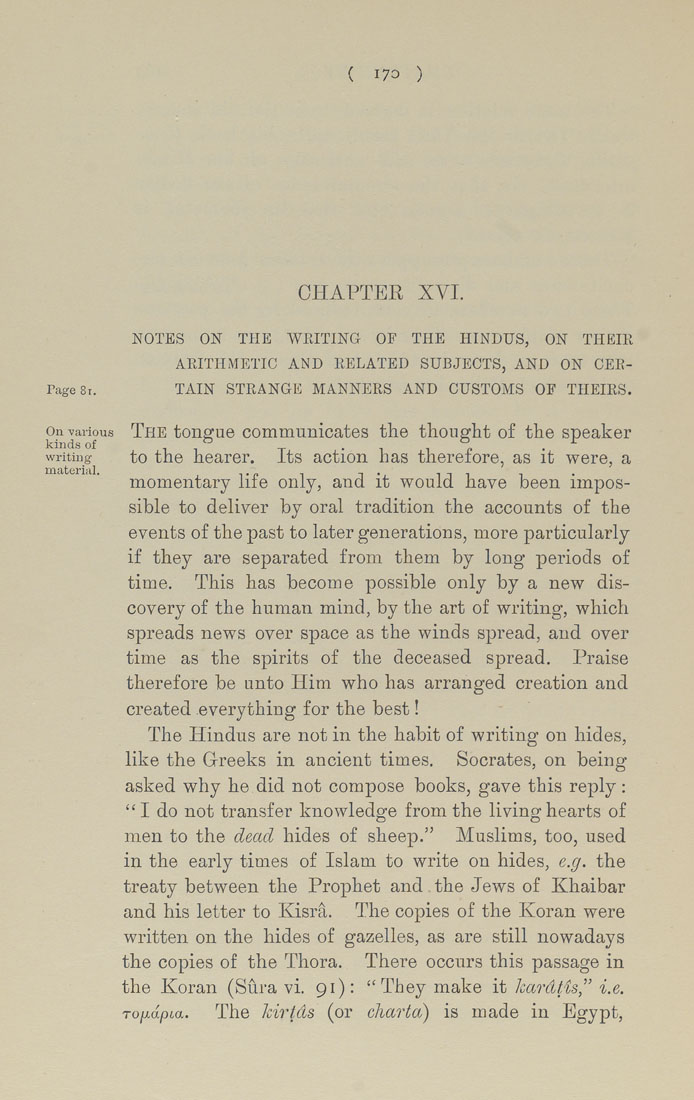Bīrūnī, Muḥammad ibn Aḥmad, Alberuni's India (v. 1)
(London : Kegan Paul, Trench, Trübner & Co., 1910.)
|
||
|
|
|
|
| Page 170 |

( 170 ) CHAPTER XVI. NOTES ON THE WRITING OF THE HINDUS, ON THEIR ARITHMETIC AND RELATED SUBJECTS, AND ON CER¬ TAIN STRANGE MANNERS AND CUSTOMS OF THEIRS. On -various kinds of writing material. T'he tongue communicates the thought of the speaker to the hearer. Its action has therefore, as it were, a momentary life only, and it would have been impos¬ sible to deliver by oral tradition the accounts of the events of the past to later generations, more particularly if they are separated from them by long periods of time. This has become possible only by a new dis¬ covery of the human mind, by the art of writing, which spreads news over space as the winds spread, and over time as the spirits of the deceased spread. Praise therefore be unto Him who has arranged creation and created everything for the best! The Hindus are not in the habit of writing on hides, like the Greeks in ancient times. Socrates, on being asked why he did not compose books, gave this reply: " I do not transfer knowledge from the living hearts of men to the dead hides of sheep." Muslims, too, used in the early times of Islam to write on hides, e.g. the treaty between the Prophet and the Jews of Khaibar and his letter to Kisra. The copies of the Koran were written on the hides of gazelles, as are still nowadays the copies of the Thora. There occurs this passage in the Koran (Siira vi. 91): "They make it kardtis," i.e. Top.dpLa. The kirtds (or charta) is made in Egypt, |
| Page 170 |







